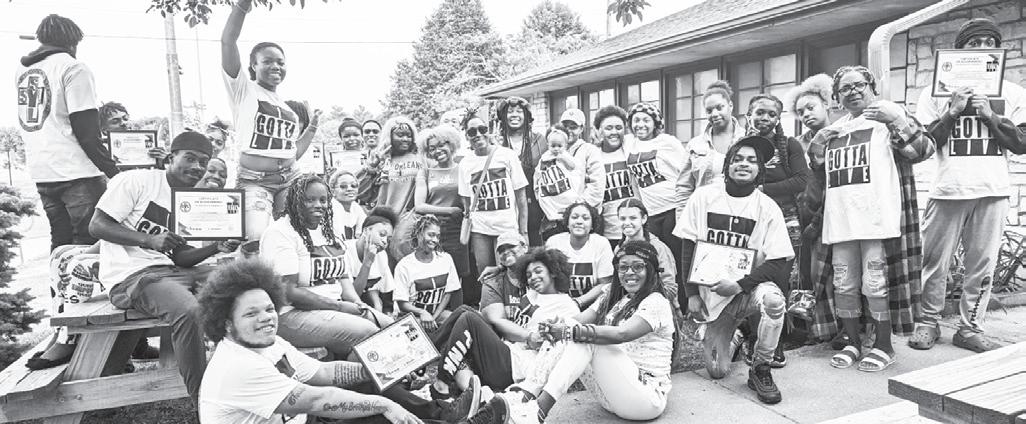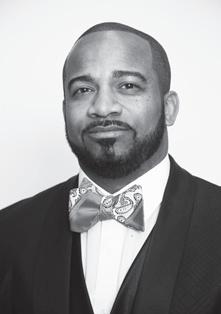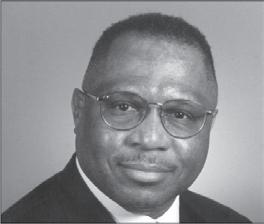
6 minute read
Hue-MAN’s substance abuse ambassadors
By Faaya Adem
More than 30 students in the Twin Cities graduated from Hue-MAN’s youth substance abuse training on Friday, June 15.
The program was designed to help young people provide peer counseling on substance abuse.
Funded by a grant from the City of Minneapolis, the organization created the training as a way to help those in need.
Hue-MAN Partnership’s community engagement liaison, Clarence Jones, said there are many young people dying from substance abuse.
He said Hue-MAN plans to bring youth who are trained
Soe
through the program to community events as young ambassadors. They would help promote substance abuse training and connect with people their age in their communities.
The four-day Hue-MAN training included sessions on the opioid epidemic and how to use Naloxone, the generic name for narcan. Maddy Reagan, overdose prevention manager for the Steve Rummler Hope Network, handed out Naloxone kits provided by the network.
At the end of the final day, the students received shirts and framed diplomas that listed the training they had completed. Those students can now take additional training with the
Steve Rummler Hope Network to become trainers themselves.
Many of Hue-MAN’s graduates are interested in giving back to their communities using the skills gained from about this project from a Facebook group run by Princess Titus, an activist and co-founder of Appetite For Change (AFC). She decided to bring her 11and 12-year-old daughters to the Hue-MAN training.
“They may be a little young, but we all go through things in prevention.”
Initially, Ceant’e was not interested in substance abuse programming. Substance abuse programming and the subject itself are triggering for her, she said. “Drugs have become less pure and more deadly.” This pushed her to join the project and increase intervention in her community.
“It was closer to the plant than whatever this is,” Ceant’e said, referring to the increase in fentanyl-laced drug overdoses. “So, to see babies dying the way they are, it’s just hard to watch.” the program.
She believes the way some adults engage with children also needs to be addressed. “Even people with substance abuse disorders should have harm reduction skills and be aware of how they can impact children.
“It’s important that adults also make sure they have Naloxone kits on them,” Ceant’e said. In the past, overdosing meant taking a large quantity of drugs, which signified that the quality of the drugs was good. Now it means something completely different.
Charisma Ceant’e learned life,” Ceant’e said. “I think that early education is the key to
Francisco Forty-Niners.
Training more young people will decrease the number of overdoses and positively impact the community, said Ceant’e. She plans on doing outreach by training and passing out Naloxone kits.
Boxing
“Now, you don’t need to take too much,” Ceant’e said. “You can take a little bit of a very bad thing and die.”

Faaya Adem welcomes reader comments at fadem@spokesmanrecorder.com.
Continued from page 12

As a result, Lennox became a part of the Lynx’s first controversial trade when she was shipped out to Miami in midseason for Minneapolis native Tamara Moore. The trade was roundly criticized by fans, who never really embraced Moore, the first and only Northsider to play for Minnesota. She was gone the following season.
As for Lennox, she became a part of two dispersal drafts, the first when Miami folded and Cleveland selected her, and then again when the Cleveland franchise folded and Seattle selected the guard.
With the Storm, Lennox looked like her old self and was reunited with former Lynx teammate Katie Smith, also picked for the Minnesota all-time top 25. Along with Sue Bird and Lauren Jackson, they helped help lead Seattle to the 2004 WNBA Championship. Her stellar play during the postseason culminated in being named Finals MVP, averaging 22 points per game.
Lennox retired from pro ball in 2011, with Tulsa (now Dallas). Her sevenyear WNBA career, as well as seven years playing overseas during the offseason, included being named to the second team WNBA All-Star (2000) and the Polish Cup winner in 2007. She also started her Lennox Foundation 22 in 2005, to support children who were victims of neglect and abuse, and won the league’s Community Assist Award in 2006.

But coming back to Minnesota earlier this month, Lennox said she was deeply touched. When her name was announced, a loud chorus of cheers echoed through the arena.
“I still have those fans out there,” she said humbly. “It’s an amazing feeling when I walked in this building. I just felt the energy. I just felt the love. Brings back a lot of memories even though a lot of things are different.”
Her place in Lynx history is secure. “We weren’t able to make that championship. But you know, we laid the foundation for those championships that came after us. So I’m very, very happy and appreciative to be here,” said Lennox, enjoying the celebratory moment as she stood on the Minnesota home court. “I’m just happy to be a part of this.”
Native Americans declined by nine percent. A study on diversity in medical schools shows Black medical students make up only 7.3 percent of the total U.S. medical school population, an increase of less than one percent over the last 40 years.
The need for more Black doctors and other physcians of color is needed everywhere, including the NFL, especially in occupations such as physician’s assistants, certified athletic trainers, physical therapists, occupational therapists, nutritionists, and behavioral clinicians.
When asked if a “Rooney Rule” is needed for hiring more Black medical staffers, Reggie Scott, the Los Angeles Rams V-P of sports medicine and performance, responded, “I think before you start talking about adding race rules to this, I think we’ve got to bring more exposure.


“We need more minorities, diverse people, we need more females… I think we need more of a mix. I think this approach is the right approach to take right now,” said Scott of the NFL Diversity in Sports Medicine Initiative.
Two of the participants in the 2022 initiative also spoke to the media: Morehouse School of Medicine Dr. Omolayo Dada, who worked with the Tennessee Titans, and Dr. Kelsey Henderson of Meharry Medical School, who worked with the San
“It kind of really opened my eyes to the fact that there is a problem,” explained Dada. “You’ve got 60 percent of players that are Black, but they are not seeing a medical staff that looks like them in equal numbers.
“Everyone was very, very welcoming,” continued Dada. “I was even able to talk with the nutritionist and the strength and conditioning coach, because health is not just only medicine. This exposure to [sports] medicine gave me an in-depth perspective as to what it would be like to be a sports medicine physician.”
“I learned basic science through sports medicine,” said Henderson. “I really learned to appreciate a holistic approach..and the social and cultural aspects in [sports medicine]. I was able to see how there was a great collaborative approach to sports medicine.”
“I think the most important thing with this program is watching some of these young students eventually get opportunities in the NFL, which is what the pipeline is all about,” said Scott.
“One of the goals…is to get undergraduate students or even high school students thinking about these types of careers,” concluded Sills. “There’s always more work to be done, but we’re very proud of the start.” from 2017 to 2018.
Continued from page 12 the next season but never fully regained the form that marked her rookie year.
Now nearing 40 years old, Truax (31-6-2) is seeking one more chance at the belt. “I don’t feel the age has caught up with me in the ring,” he told the MSR a couple of weeks before his scheduled fight last weekend. “I don’t feel I have lost any steps.” Morrill, who defected from Cuba and came to Minnesota a few years ago, said, “I think Minnesota first of all… It is my second home,” he said in Spanish, as his brother translated in English.
James held the WBA welterweight title from 2020 to 2021. He and the super lightweight Owens are stablemates at the Circle of Discipline boxing program.
St. Paul boxing promoter Quincy Caldwell, who owns and runs Coach Q Training in St. Paul, told reporters, including the MSR, during a June 14 open workout and news conference at Element Gym in St. Paul, “Minnesota boxing is very underrated.”
Both Truax and Proper admitted that finding suitable boxers to train with can be challenging. “We don’t have the number of fighters thaat they have in California,” noted the former. “Truthfully, I’m at the level where I can bring in guys to mimic styles when I’m fighting an opponent.”
Proper trained with Truax in preparation for his June 17 scheduled fight against Cameron Krael of Las Vegas, where he suffered his first defeat as a pro by TKO in the 6th round. “The preparation was extremely intense,” stressed the St. Paul native, who record is now 7-1. Reid, Jr. won his second pro fight on the same card with Proper, a first-round knockout over Christopher Morrow, and is now 1-0-1. He first fought as a pro in March.
“No matter what platform I’m on…I am an African American young man [age 26], who loves my family,” said Reid. “I love boxing. I’m promoting love, happiness, joy whenever you see me.”
Caldwell said his main goal as a boxing promoter is to provide fair opportunities for local fighters. “It’s nothing to do with ego for me,” he declared. “My goal is to give fighters the opportunities to build their careers.”
Charles Hallman welcomes reader comments at challman@ spokesman-recorder.com.

Follow Us!
@MNSpokesmanRecorder











